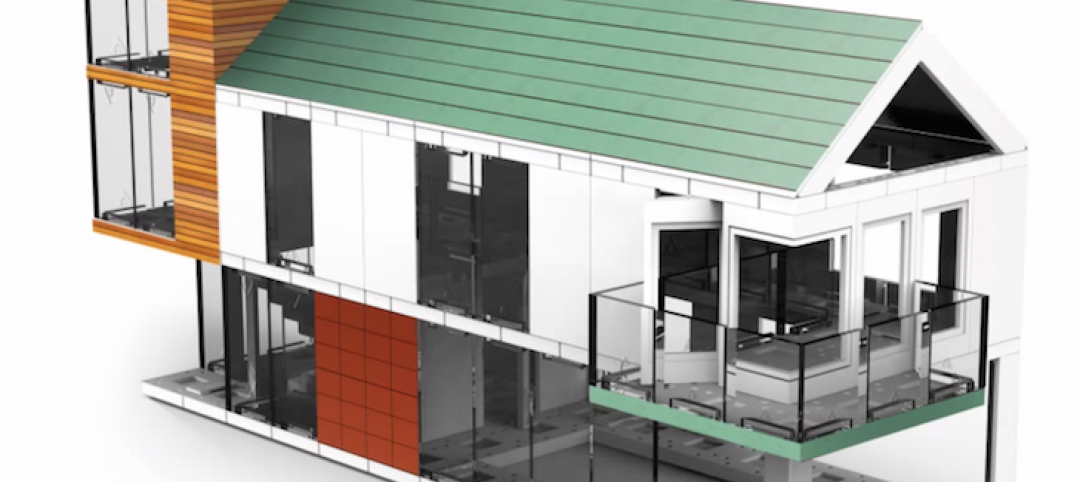The Beck Group has been awarded The 2012 Build Georgia Award by the Associated General Contractors of America (AGC) for its Cave Spring Rehabilitation Center project.
Beck was the Construction Manager at Risk on the project which was completed on budget by the defined completion date, with zero lost-time accidents.
The Georgia Department of Labor’s Cave Spring Rehabilitation Center provides job and life skills training for people with disabilities, specializing in those with hearing impairments. As part of the project, The Beck Group replaced 50-year-old buildings with a state-of-the-art campus facility that allows for the future expansion of client services. Project plans included designing the new facilities with ADA Plus capabilities, which emphasizes accessibility and technology to meets the needs of those with disabilities.
The end result produced a 17,690-sf classroom/administration building and a 19,690-sf,, two-story dormitory with 52 beds, a restaurant-style kitchen and hotel grade laundry facilities.
Both structures were built to accommodate and train students in the food services and hotel industries and were also equipped with a message board and visual convenience/emergency notification system specifically tailored to those with hearing impairments. Additionally, two teaching greenhouses, an outdoor amphitheater, basketball court, dog walking park and walking trails were completed.
With this achievement, The Beck Group has accumulated more than 500 construction, design, real estate and organizational awards, including Fortune’s 100 Best Places to Work. The company’s craftsmanship and respectful rapport with clients, subcontractors and industry colleagues contributes to Beck’s reputation for delivering Better Buildings, Better Built. +
Related Stories
Healthcare Facilities | May 27, 2015
Rochester, Minn., looks to escape Twin Cities’ shadow with $6.5 billion biotech development
The 20-year plan would also be a boon to Mayo Clinic, this city’s best-known address.
BIM and Information Technology | May 26, 2015
Lego-like model building kit was created by an architect for architects
Arckit, as the system is called, was designed to a 1:48 scale, making it easy to create models accurate to the real-life, physical building projected.
BIM and Information Technology | May 26, 2015
Moore's Law and the future of urban design
SmithGroupJJR's Stephen Conschafter, urban designer and planner, discusses his thoughts on the 50th anniversary of Moore's Law and how technology is transforming urban design.
Architects | May 26, 2015
AIA design competition creates portable, temporary housing for the homeless
The winning design from the AIA's "A Safe Place" competition was built at the AIA convention in Atlanta and later donated to a local non-profit partner.
BIM and Information Technology | May 21, 2015
How AEC firms should approach BIM training
CASE Founding Partner Steve Sanderson talks about the current state of software training in the AEC industry and common pitfalls in AEC training.
Architects | May 20, 2015
Architecture billings remain stuck in winter slowdown
Regional business conditions continue to thrive in the South and West
University Buildings | May 19, 2015
Special Report: How your firm can help struggling colleges and universities meet their building project goals
Building Teams that want to succeed in the higher education market have to help their clients find new funding sources, control costs, and provide the maximum value for every dollar.
University Buildings | May 19, 2015
Renovate or build new: How to resolve the eternal question
With capital budgets strained, renovation may be an increasingly attractive money-saving option for many college and universities.
University Buildings | May 19, 2015
KU Jayhawks take a gander at a P3 development
The P3 concept is getting a tryout at the University of Kansas, where state funding for construction has fallen from 20% of project costs to about 11% over the last 10 years.
Multifamily Housing | May 19, 2015
Zaha Hadid unveils 'interlocking lattice' design for luxury apartments in Monterrey, Mexico
Hadid's scheme was inspired by the Mexican tradition of interlocking lattice geometries.
















